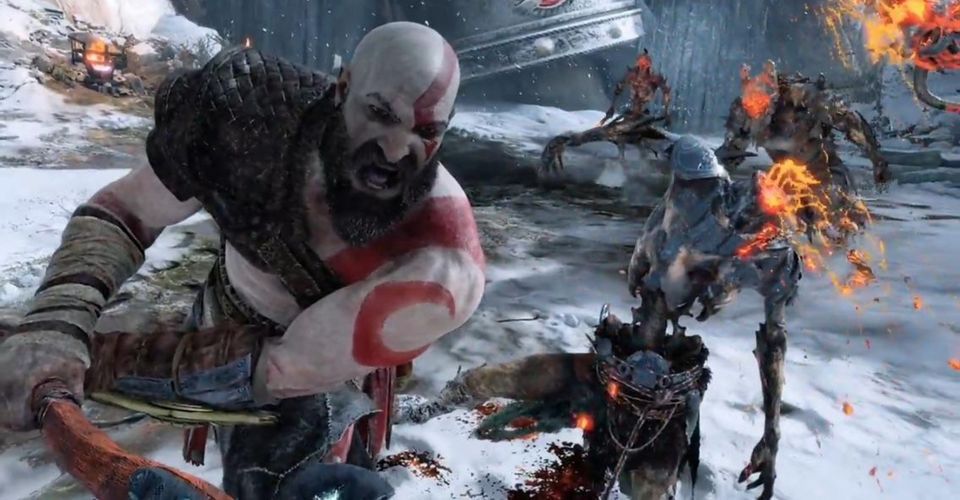Last week, Jason de Heras tore down the first boss fight in God of War. The Respawn Design Director is at it again with what is essentially a guide to some of the combat mechanics in the game.
Jason earlier broke down the first boss fight in the game, summing it up as something of an ‘illusion of challenge’. Serving more as a tutorial than a real challenge, Jason pointed out that there was a very distinct pattern in the Daudi’s attack, especially the log stab, the second hit of which didn’t really land on Kratos if you blocked.
In his most recent series of tweets, Jason starts off by saying that the game’s enemies are tasked to keep the player engaged for over 20 hours of gameplay. The first enemy, the Draugr, serves the role of a punching bag and as such, isn’t really a dangerous character. The subsequent enemies on the other hand serve to stress test the player by using varied attack and defensive techniques.
The first mechanic Jason mentions is that of Hard Locks. With a video of Kratos battling a Hel-Reaver, he explains that this category of enemies forces the player to engage using a less common technique. Kratos’ mighty Leviathan Axe bounces off the Hel-Reaver even after a parry. Kratos is then forced to fight barehanded in order to inflict damage.
“While the Hel-Reaver puts the player in a vulnerable reaction when hit, the Revenant EVADES away when the player attempts any Axe attack including Axe throw. The player is forced to use Atreus's arrows to stun her and allow Kratos to land a few hits before she resets,” Jason continues.
Here the Revenant takes a slightly different approach to discourage the use of only one tool. Instead of being immune to the axe, the Revenant evades Kratos, forcing the player to use Atreus’ arrows to stun it first.
Jason then explains what he calls “windows of opportunity”. The Stone Ancient can be damaged only when the axe is thrown at the right time. You can get optimal damage by two axe throws, but the timing has to be worked out. Axe throws on any occasion other than the window just bounce off and cause no damage.
“These 3 examples of HARD LOCKS force the player to engage in three different mechanics (Stance switching, Atreus and Axe Throw). These enemies are effective because of the readable feedback when the discouraged tools aren't having an effect,” said Jason.
The next mechanic is the Soft Lock, where the enemy discourages a tool but highly encourages another. Jason explains that these enemies die fast but Kratos will also take damage from the death explosion. An axe throw from afar or Atreus’ arrows are encouraged here.
Jason then makes use of a Dark Elf to explain the Defense mechanic. While Draugrs can’t defend against attacks that will stun them, Dark elves will evade at the right moment, resetting the interaction.
And finally Attack Properties. We see this mechanic in plenty of games. The yellow circle that indicates a parryable attack cannot be blocked, so the player is forced to either evade or get their timing right. The red circle on the other hand can only be evaded. Parrying or blocking will result in damage to Kratos.
Jason also explained Layering, where a boss uses attacks similar to his ‘minion counterparts’. The Dark Elf boss essentially adapts and improvises on normal Dark Elf attack patterns. For example, when evading Kratos, the Dark Elf boss also drops a mine forcing the player to make an evasive manoeuvre themselves.
“The Dark Elf boss SHARES the spin attack from basic Dark Elf, but adds unique attacks like an Unblockable thrust among other behaviors/stats. Also, the spin attack on the Dark Elf boss has slower anticipation, which throws the player's timing off compared to normal elf,” he elaborates.

